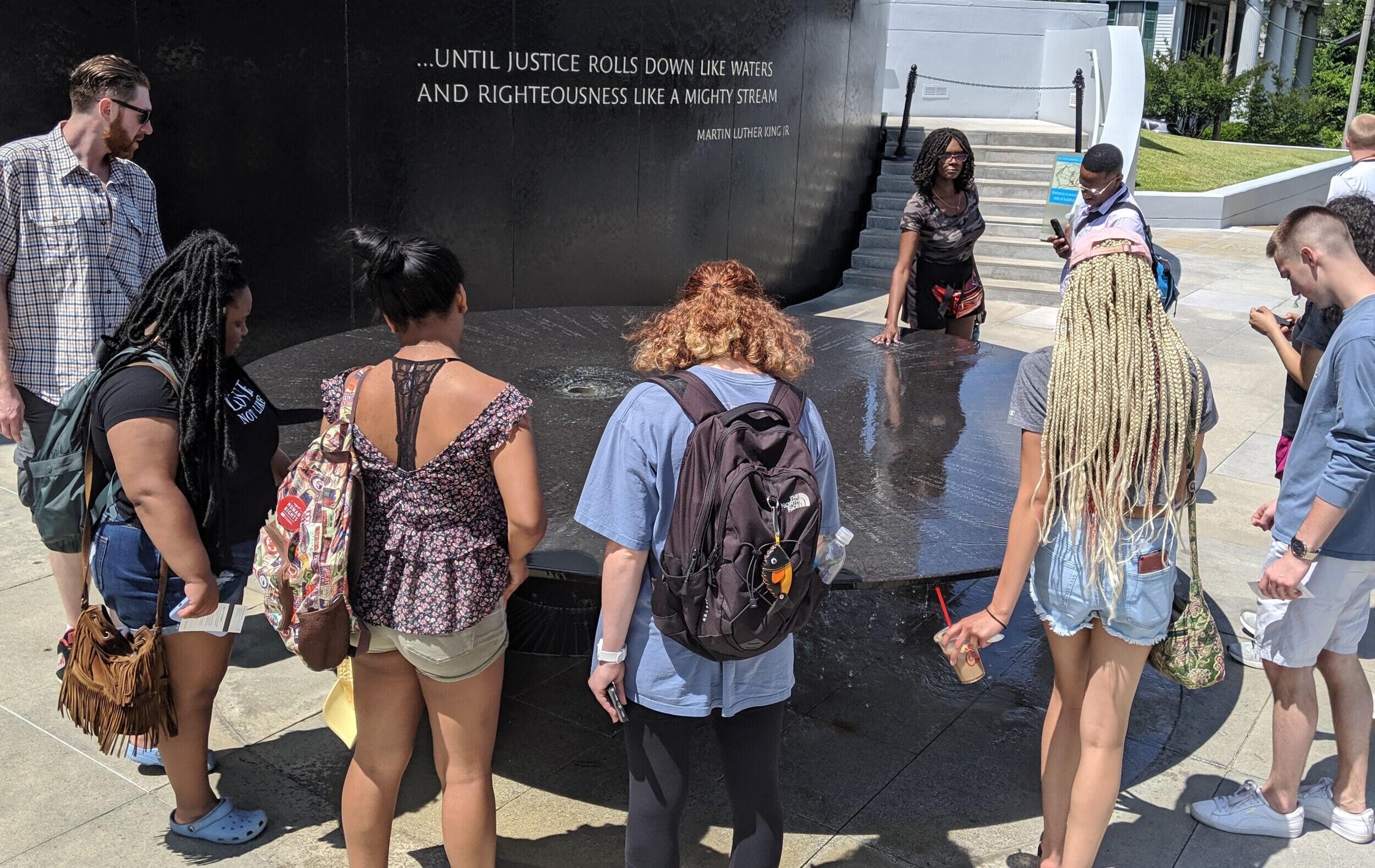
June 27, 2019
Being there: A weeklong trip along the Civil Rights Trail helps VCU students connect history with the present
Share this story
For Virginia Commonwealth University student Jordan Moye, visiting the Edmund Pettus Bridge in Selma, Alabama — where civil rights marchers calling for voting rights legislation were attacked by law enforcement officers in 1965 in what came known as “Bloody Sunday” — was a powerful experience.
“It’s very intense,” said Moye, a sophomore in the Department of Political Science in the College of Humanities and Sciences. “You can’t get that feeling if you’re just reading it in a textbook. And if you’re reading it in a textbook, you can distance yourself from it, you can distance yourself from all the cruelty. When you’re there, it’s hard to distance yourself. You’re right there. It’s personal.”
The Edmund Pettus Bridge was one of 19 sites in Alabama and Georgia connected to civil rights history that 13 VCU students from two new political science classes – one focused on the civil rights movement and the other on U.S. voting rights — visited this summer.
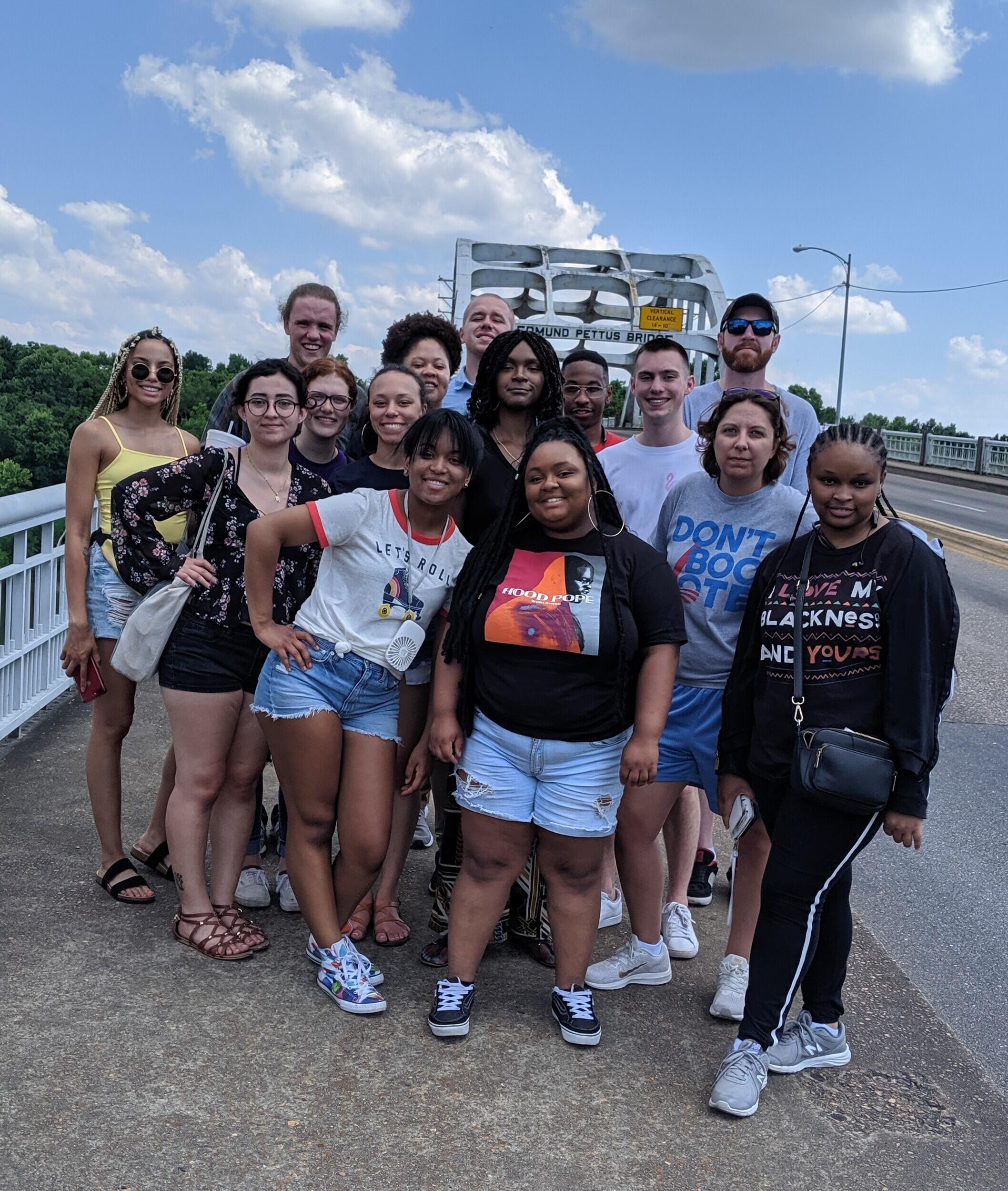
The idea behind the classes was that the best way for students to learn about the civil rights movement would be to walk in the shoes of the leaders, activists and volunteers who fought for equal access to voting rights, public education and public transportation.
Each class combined a traditional curriculum and in-class seminars introducing the historical background leading up the peak years of the struggle for racial equality in America, and culminated in a two-week trip to Atlanta, Birmingham, Selma, Montgomery and other cities that were the sites of pivotal moments in the civil rights movement.
“Giving the students a chance to learn the content in the places where it happened, I think, gives them a different perspective in learning the material. From a pedagogical standpoint, I thought it would be a really unique and interesting way to get them out of the classroom, and immersed in the history, whether they were walking across the Edmund Pettus Bridge or sitting in the Ebenezer [Baptist Church] chapel in Atlanta with their earbuds in, listening to the sermon that [Martin Luther] King gave there before he was assassinated in Memphis,” said Alexandra Reckendorf, Ph.D., assistant professor and associate chair of the Department of Political Science.
“These experiences can make the content come alive in a way that wouldn’t if I had just said, ‘Please read this sermon.’”
Reckendorf taught the Civil Rights Movement course, while adjunct VCU professor Cristelle Brown, senior state director at Spread the Vote, a nonprofit focused on helping eligible voters obtain IDs needed to cast a ballot, taught the U.S. Voting Rights course.
“The trip was amazing. The students were engaged, and I learned a lot from our visits to the various museums, churches, and institutes myself,” said Brown, a VCU political science alumna. “I hope each of [the students] embraced the history that was likely not taught to them during their K-12 educational career, and I hope that they were reminded of the sacrifices made by those that came before us in the fight for the rights of black Americans in the United States.”
Connecting to the present
At each location the class visited, and for each reading they were assigned, the students were asked to not simply learn the historical information but to also reflect on the ways in which the history of the civil rights movement is still very much connected to the politics and policy of today.
“I really wanted to see if we could get them to reflect on how the past is still very much the present, how discrimination and prejudice might look and sound a little bit different, whether that’s just in society or economics or legally, but that it still exists in some ways that are a legacy of that past and for them to have the chance to spot those connections on their own,” Reckendorf said.
Michaela Friend, a senior double majoring in African American studies and political science, highlighted in her photo journal — one of the courses’ assignments — a photo of a display at the Birmingham Civil Rights Institute on segregation and education, and commented on how Richmond remains largely segregated today.
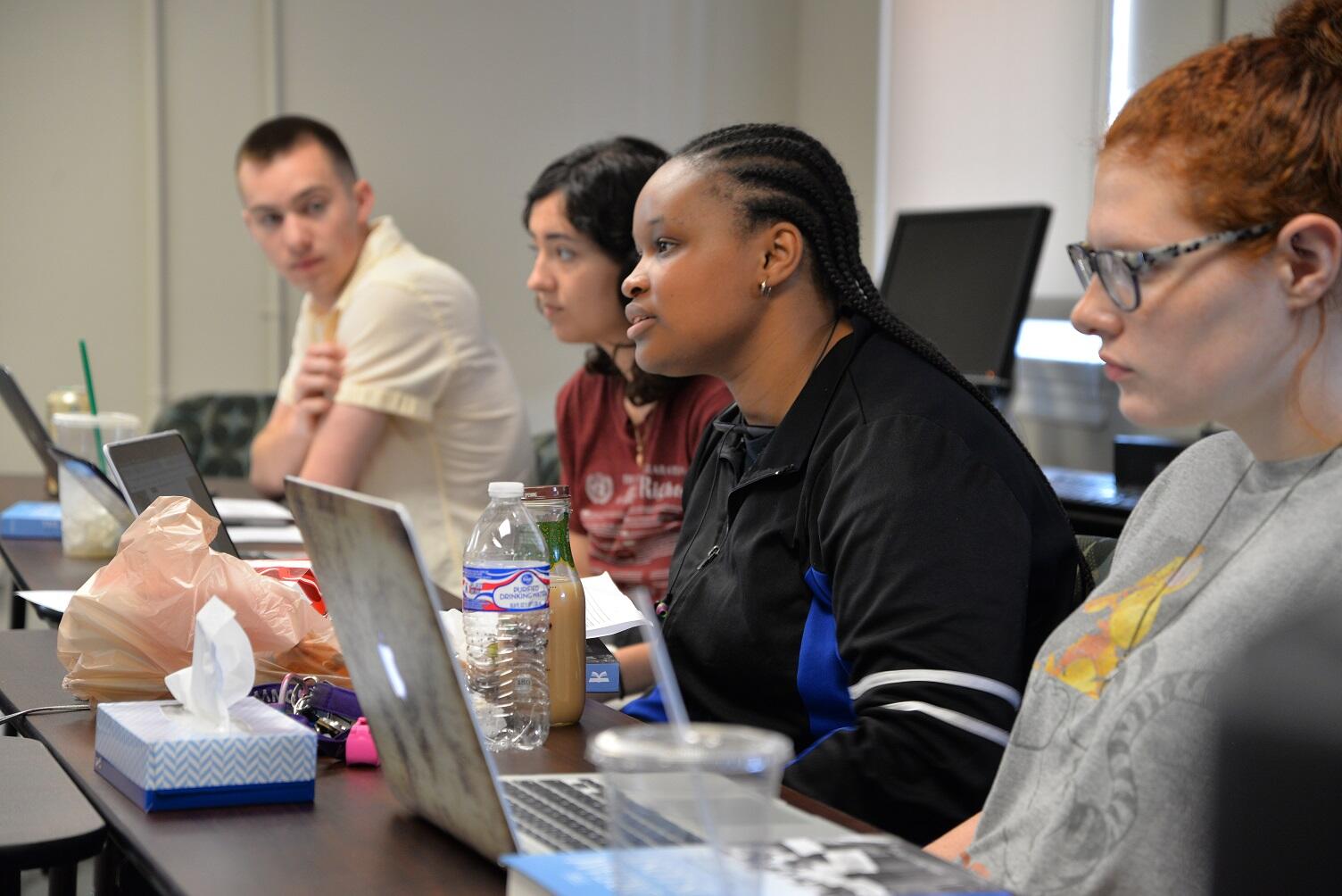
“At the same place, there was an exhibit that had a bunch of crosses representing infant mortality,” Reckendorf added. “And I was standing next to a student looking at that, and we were talking about how that gap still persists. And it’s a talking point in the Democratic presidential campaigns. Even when the sites didn’t [explicitly connect to the present, the students] were able to link it.”
Marc Rabourdin, a senior political science major, reflected on how photos they saw at an exhibit on Eugene “Bull” Connor — who as Birmingham’s commissioner of public safety directed the use of fire hoses, attack dogs and other tactics against civil rights protesters — reminded him of militarized police today.
“The exhibit [displayed Connor’s] armored vehicle that he used during the civil rights movement to terrorize black communities,” Rabourdin said. “If it hadn’t had Bull Connor’s name on the exhibit, I would have thought it was still being used actively today by police. We have not come very far.”
At the Equal Justice Initiative’s Legacy Museum: From Enslavement to Mass Incarceration in Montgomery, the connections between history and today were especially clear.
“You walk along a timeline beginning at the site of Montgomery’s actual slave market; you progress through the 19th and 20th centuries, and quickly realize that progress might not be the right word, because by the end of their timeline you realize that we haven’t managed to undo the legacies of slavery and Jim Crow, and that even if we’ve reached the end of the exhibit, that the fight for racial equality and justice has not ended because U.S. prisons are disproportionately packed with black men, women, and even children, most of whom lack the resources necessary to secure their due process rights, and who will struggle to provide for their families and to make steady lives for themselves upon their release,” Reckendorf said.
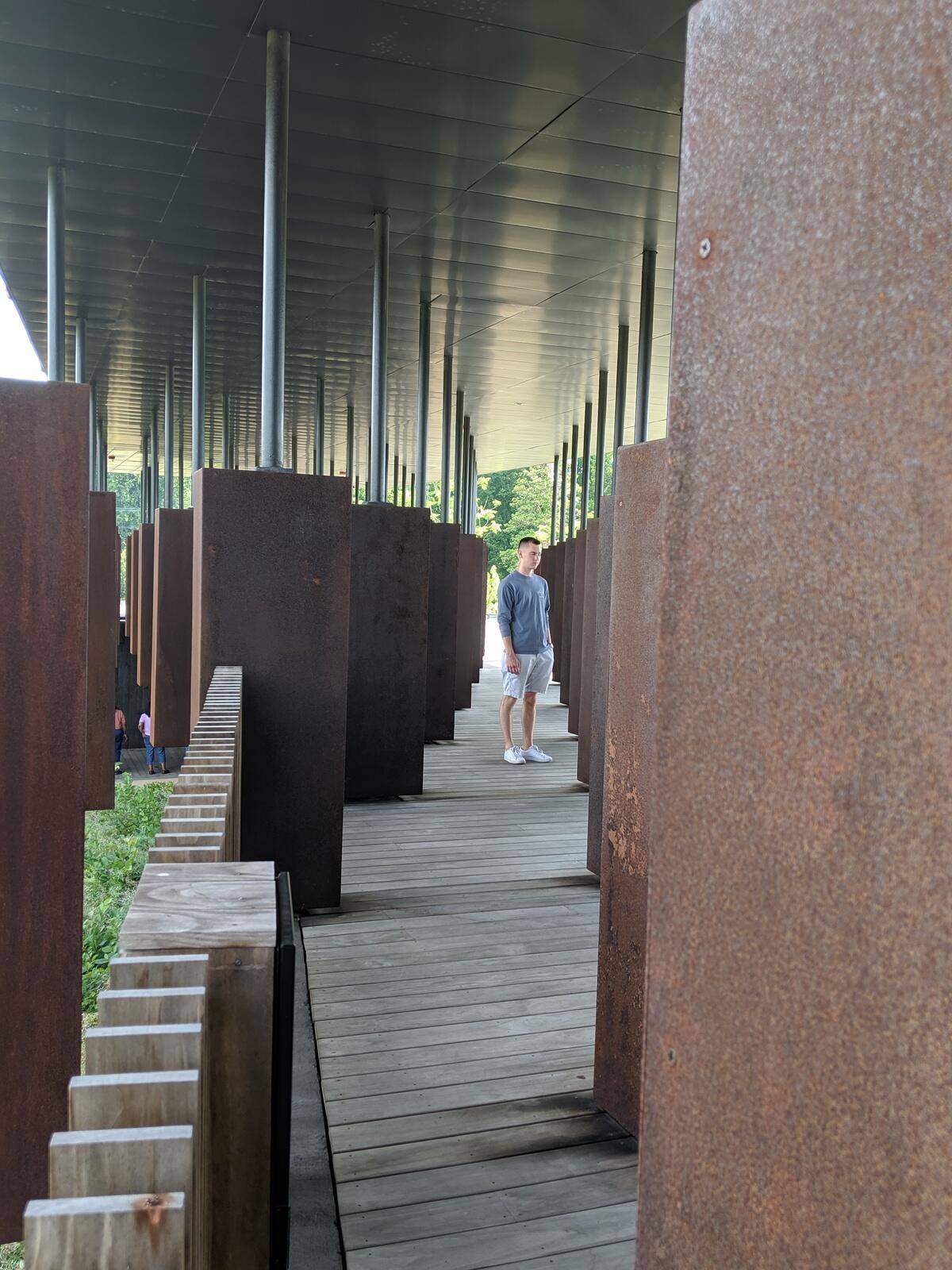
The Legacy Museum and accompanying National Memorial for Peace and Justice, which honors the more than 4,400 African American men, women and children who were killed by white mobs between 1877 and 1950, both resonated strongly with the students, particularly because many of them read “Just Mercy,” written by Equal Justice Initiative founder and Executive Director Bryan Stevenson, as VCU’s Common Book during their freshman year.
VCU student Michael Barnes said visiting the lynching memorial was particularly emotional, and he has been talking about his experience and showing pictures to teachers and students at the Henrico County elementary school where he works as an interventionist.
“When I [showed] them pictures of the columns hanging from the ceiling [at the memorial], a lot of them were able to fill in the blank,” he said. “Me being a physical representation of someone who went to these places and talking about it with people who have maybe never left Virginia, or never been out of the city, that was very powerful.”
The students also felt a connection to the civil rights movement at the Freedom Rides Museum in Montgomery, because many of the freedom riders were college students who had to balance school with activism.
“I think it kind of provided a different view because usually you see Martin Luther King and Rosa Parks and they’re these people who are put up on a pedestal,” Reckendorf said. “There’s only a few of them. They’re older. You don’t see a lot of yourself in them. And here at the Freedom Rides Museum, you’re able to see a little bit of yourself.”
VCU student Alex Cornbrooks said a highlight for him was a lunch counter sit-in simulator at the National Center for Civil and Human Rights in Atlanta.
“I thought I would be able to get through it without flinching or getting too emotional, but I was completely wrong,” he said. “I’m sure there were fans or something built into the headphones because when the yelling was right in my ear I felt breath on the back of my neck — that or I was imagining things. I know that what I heard while doing it wasn’t a true representation, there were no racial slurs or profanity, but I do feel like I gained a better appreciation for what the protesters went through and understand how incredibly brave each one of them must have been.”
Service learning
As part of the two classes, which are designated as service-learning courses, the students will be required to work at least 20 hours this summer on a project launched by Gov. Ralph Northam to identify and make recommendations to address Virginia laws that were intended to or could have the effect of promoting or enabling racial discrimination or inequity.
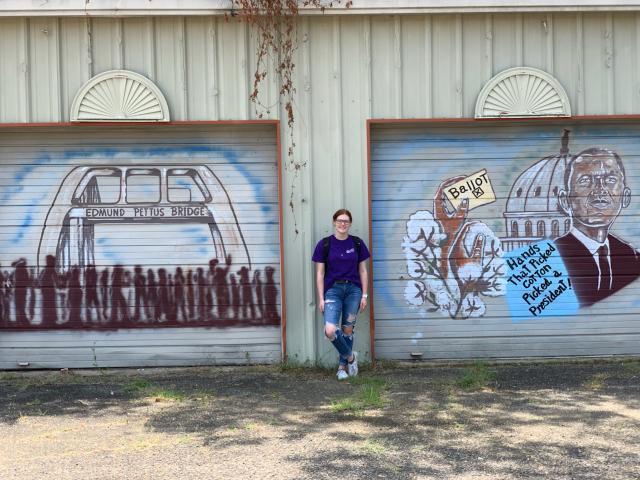
In his executive order establishing the Commission to Examine Racial Inequity in Virginia Law, Northam wrote: “In the case of the Acts of Assembly, discriminatory laws have been enacted, and in some cases obviated by court rulings. Nonetheless, the words still remain in the Acts as all-but-hidden reminders of the initial malicious intent and the painful history that spawned the laws. This Commission will work to identify the vestiges of inequity and inequality in Virginia’s laws, laying the groundwork for the redefining of the Commonwealth in the 21st century as a state committed to the success and equitable treatment of every citizen.”
For their service learning, the students will conduct research in support of the commission’s work, documenting overt and covert discrimination in Virginia law.
Supported by alumni and friends
The civil rights trip was made possible by the support of 59 alumni and friends who donated more than $41,000 to help fund the students’ travel and lodging.
Traveling and learning together was a great experience, the students said, and many have become friends even though most of them didn’t know one another prior to the classes.
“All of us now have at least 80 percent of each other’s numbers saved in our phones,” Friend said. “We spent so much time together, I feel like I’ve known [a lot of my classmates] for a long time.”
While the trip was something of an experiment, the students’ reflections and classroom discussion afterward show that it led to a deeper understanding of the civil rights movement and its connections to today, Reckendorf said.
“[Had they not gone on the trip] I don’t know if they would have been able to make those connections between the way history is preserved and presented, and some of the more nuanced things that were undergirding the civil rights movement and the continued movement,” she said. “[For example]: should we say ‘civil rights movement’ when there were multiple different directions? Where does it stop and where does it start?
“The students started to ask questions that maybe they wouldn’t have asked if they had stopped with the K-12 history,” she said. “That’s probably the most important takeaway that we wanted them to have, and it seems they have taken that away.”

Subscribe to VCU News
Subscribe to VCU News at newsletter.vcu.edu and receive a selection of stories, videos, photos, news clips and event listings in your inbox.




